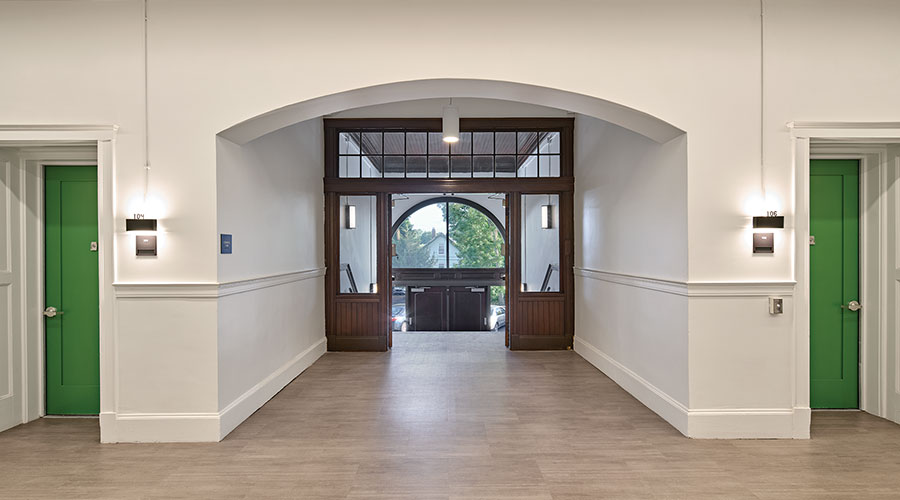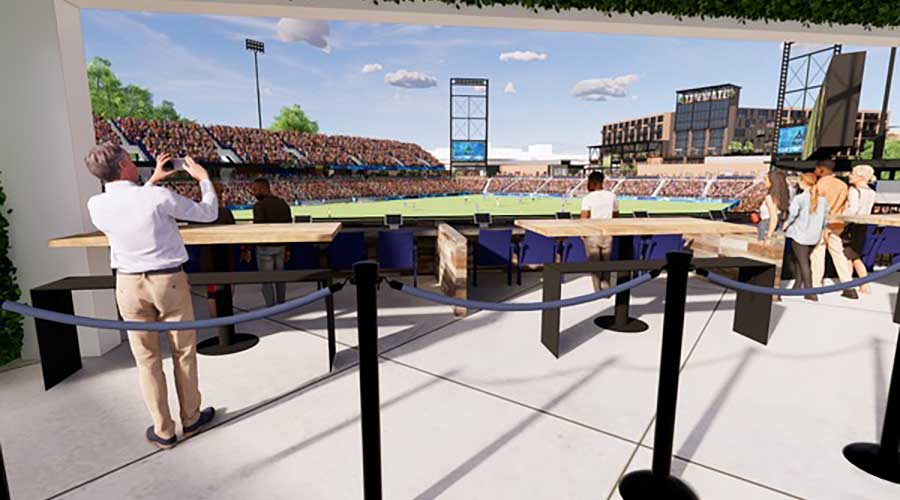Training Of Building Occupants, Operators Is Critical To Maintaining High Performance
Of course, keeping the building as efficient as it operated in the first year is a high priority for GSA. To this end, GSA and the project team have worked carefully with both occupants and the new building operators to train them on how the high-performance building works.
“To operate on an ongoing basis a building of this sophistication requires a different level of operations,” says Stine. “If someone’s hot, you can’t just turn down the thermostat.”
Thomas says one strategy GSA has employed is producing several bulletins — “eBlasts,” as Thomas calls them. These describe particular aspects of the building. Thomas says that, even though the occupants are generally a tech-savvy crowd, because they’re coming out of an older building they’d been in for more than 40 years, which was “the farthest thing from a high-performance green building as you could get,” there was still a learning curve. And so these eBlasts are used to explain the different elements of the building and to instruct occupants about how to use the building.
For example, one bulletin describes the building’s rainwater harvesting systems, and how this water would be recycled to flush toilets and for irrigations.
Another bulletin, titled “Improving Your Workplace Experience,” explains about daylighting. “You’d be coming into a space with lots of outside light, but in the actual office space, the lights will come on and off,” he says. “We explained how and why this worked, and how you could override the system if you’re working at night.”
The bulletin also covers noise control, indoor air quality, and three ideas to “boost your energy in 60 seconds or less.” (Stroll the commons to take in the view of the Duwamish Waterway. Sit up straight, you’ll instantly feel better — and get an extra boost of confidence. And think on your feet — literally. Standing briefly or brainstorming with a group can help you feel energized.)
“Every building is a prototype,” says Chaloeicheep. “But we just hand buildings over and that’s not really fair.” In addition to the training and the project teams’ careful eye on the building during the first year, Thomas also says an USACE representative was involved in the entire process, from design, through commissioning, to M&V. And going forward, there is a team of several USACE representatives who will work with the contracted building operators, both to serve as liaison to the occupants and also to brainstorm other ideas about how to maintain and improve efficiency.
While this building is a prototype, the question has often arisen: Can this process and the building that resulted be repeated, or is this a vainglorious “showcase” building?
“When we first started, I would’ve thought this was a showcase,” says Thomas. “But because of the way the design/build team integrated everything, including the metering and technologies, from a cost perspective, it’s not more than traditional.” The only real premium is the costs for the additional energy meters, but those will pay for themselves many times over, he says.
Thomas says that at least one project team is already trying to following the example of this project — especially in regards to the performance guarantee in the contract. “The State of Washington is working on a building, and is working with us to learn about the approach we took,” he says. “They’re going to use a lot of the same strategies.”
Thomas believes other project teams can follow this example, as well. “If an owner really wants to look for long-term efficiency, it certainly pays back to go to the effort we did. It took some planning up front, but you really get out of if what you put into it.”
Related Topics:













